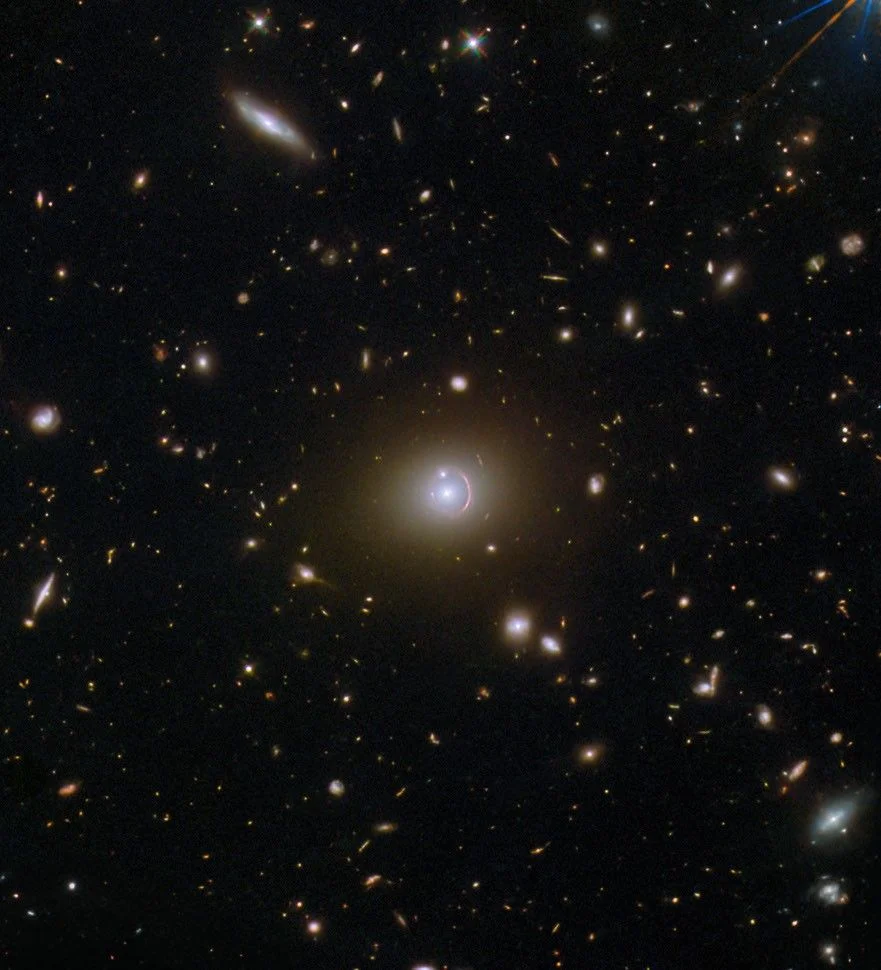
Hubble Captures Stunning Einstein Ring: A Cosmic Optical Illusion Discovered by Citizen Scientist
The Hubble Space Telescope has once again delivered a breathtaking image, this time capturing a distant galaxy's light warped into a near-perfect Einstein ring. This rare phenomenon, a testament to the power of gravity and the vastness of the universe, was spotted by a keen-eyed citizen scientist participating in the SPACE WARPS project. But what exactly is an Einstein ring, and why is this discovery so significant?

The image showcases a remote galaxy, identified as HerS 020941.1+001557, appearing as a red arc partially encircling a foreground elliptical galaxy, SDSS J020941.27+001558.4. A third galaxy, SDSS J020941.23+001600.7, also seems to intersect the red crescent, adding another layer to this cosmic spectacle.
This alignment creates a gravitational lens effect, bending the light from the distant galaxy around the massive foreground galaxy. This bending and magnification of light, predicted by Einstein's theory of general relativity, results in an Einstein ring. As NASA explains, gravitational lenses occur when light from a distant object bends around a massive object between us and the distant object. When alignment is perfect, a complete ring of light appears. In this case, the alignment is near perfect, creating a pronounced partial ring.
What makes this particular Einstein ring special is not only its beauty but also the story behind its discovery. A citizen scientist, participating in the SPACE WARPS project, flagged this gravitational lens, highlighting the crucial role ordinary people can play in astronomical discoveries. The SpaceWarps project enlists the help of volunteers to search for gravitational lenses, supplementing the work of computers that can sometimes miss these subtle phenomena. As reported by Space.com, human pattern recognition skills remain invaluable in identifying such complex cosmic features.
The distant galaxy, HerS 020941.1+001557, is now a staggering 19.5 billion light-years away. The light we see in the Hubble image began its journey approximately 11 billion years ago, offering a glimpse into the universe's distant past. The foreground elliptical galaxy, SDSS J020941.27+001558.4, is comparatively closer, situated about 2.7 billion light-years from Earth.
This discovery not only provides a stunning visual but also offers valuable insights into the distribution of mass in the universe and the properties of distant galaxies. The magnification effect of gravitational lensing allows astronomers to study these far-off objects in greater detail than would otherwise be possible.
The Hubble Space Telescope continues to amaze us with its ability to capture the beauty and complexity of the cosmos. What other secrets of the universe are waiting to be uncovered? Share your thoughts in the comments below!